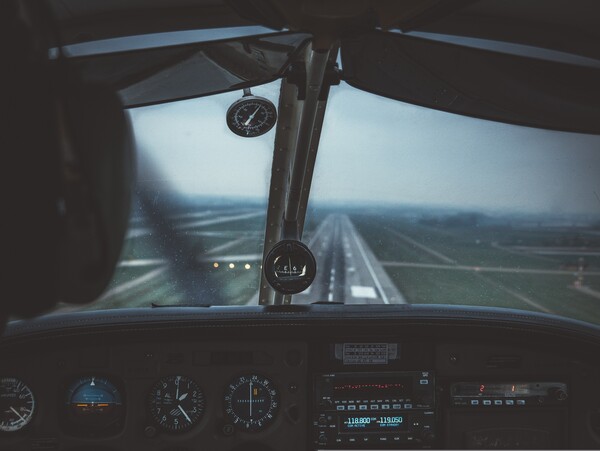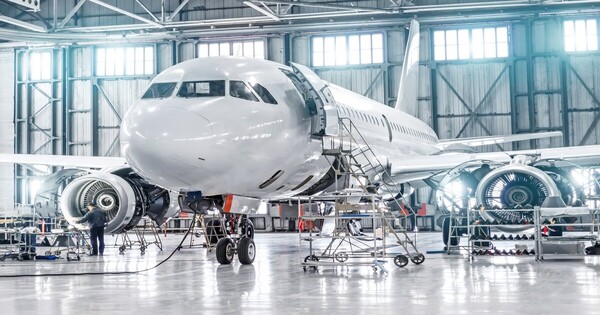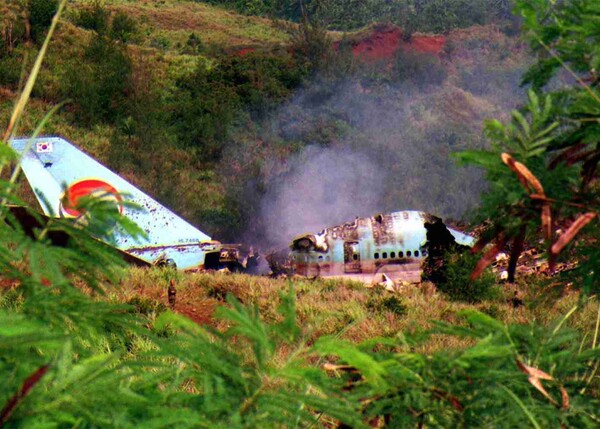On December 29th, 2024, Jeju Air Flight 2216 crashed at Muan International Airport, South Korea, bringing deep sorrow to many. All but 2 of the 181 on board lost their lives, which included people of all ages, from children to the elderly. As the situation reflects the importance of international airports and flight safety, especially with the acceleration of globalization, the Sungkyun Times (SKT) aims to shed light on the challenges of aviation accidents for a path to safer skies.
The Current State of Aviation Accidents
-A Closer Look at Aviation Accidents
According to the International Civil Aviation Organization (ICAO), aviation accidents are defined as any accident related to an aircraft that occurs from the moment crew members and passengers board until they disembark, including fatalities, injuries, or damage to the aircraft. The main reasons for aviation accidents are pilot error, weather conditions, and mechanical failure. However, the accidents are not usually caused by a single factor but by a combination of them. As the National Transportation Safety Board (NTSB) reported in 2020, 69.1% of aviation accidents are caused by pilot error. While pilot error refers to a pilot’s misjudgement of a situation, it usually exists alongside other entailments such as poor decision-making, lack of knowledge and training, or impaired concentration due to fatigue and stress. For example, the landing of Korean Air Flight 015 at Gimpo International Airport in 1980 was affected by bad weather conditions, leading to pilot error. On that day, the airport was shrouded in thick fog, and visibility was reduced to between only 800 to 1,000 meters. During the landing approach, the pilot lost altitude too quickly, and the engine hit the embankment in front of the runway. Although the crew and passengers managed to leave the plane safely, the aircraft was severely damaged. Additionally, mechanical failure is also a compounding contributor to accidents. In 2018, Indonesian Lion Air Flight 610 , a flight departing from Soekarno-Hatta International Airport, crashed into the sea 13 minutes after takeoff, killing all 189 people on board. The reason was an airframe defect caused by the Maneuvering Characteristics Augmentation System on the Boeing 737 MAX aircraft. As can be observed, aviation accidents happen for a variety of reasons and often have multiple causes.

-The Gravity of Aviation Disasters
Aviation accidents are commonly defined as major incidents because they cause large-scale loss of life, and their severity is reflected in the structural characteristics of the aviation industry and the procedures that follow such accidents. Currently, almost all airlines in the world operate airplanes from Boeing and Airbus, the two major manufacturers in the aircraft market. When a plane crashes and the aircraft type is identified, the manufacturer and the airline involved enter an emergency procedure to investigate the cause of the incident. Because all airlines operating the same aircraft model must re-inspect their planes, this results in substantial financial losses for both the supplier and the airline, causing major disruptions throughout the aviation industry. In the aforementioned example, after the 2018 Lion Air Flight 610 crash, the Boeing 737 MAX fleet was taken out of service globally, costing Boeing and many other airlines heavily. According to the Ministry of Land, Infrastructure, and Transport (MOLIT), when an air crash occurs in Korea, the Air and Rail Accident Investigation Board (ARAIB) investigates the cause of the crash based on interviews with pilots, analysis of flight records, airframe defects, and maintenance history, which can last from six months to as long as three years. However, the impact of an airline crash goes far beyond physical damage, with longterm psychological, social, and economic effects also having to be taken into consideration.

Echoes of Tragedy: The Lasting Wounds
-Invisible Scars: Unveiling the Emotional Impact
Due to the seriousness of airline disasters, victims and their families often experience deep psychological distress. According to the United States (U.S.) National Institutes of Health, 40% of airline crash survivors are at risk for posttraumatic stress disorder (PTSD) and depression two months after the crash. PTSD is especially severe, as victims are constantly stressed or frightened, even when they are not in danger. In these situations, the lack of compensation adds to the suffering of victims and their families. A bereaved family member of the China Eastern Airlines Flight 5735 crash in 2022 commented in an interview with the SKT, “Due to the death of the head of our household, we suffered from immediate livelihood problems, which caused great psychological distress.” In addition, aviation accidents have a significant impact on public sentiments. The 1997 crash of Korean Air Flight 801 , which killed 228 of the 254 people on board its flight from Gimpo Airport to Guam, was a profound tragedy that greatly heightened public anxiety. According to the NTSB, the cause of the crash was a combination of pilot error, bad weather, and negligence by the U.S. Federal Aviation Administration. However, the Guam government avoided responsibility for its ineptitude by blaming the pilots for the crash, which led to widespread distrust of the government. The role of the media also had a significant impact on the general sentiment. At the time, the media captured the public’s attention with continuous coverage of the crash details, but the lack of accuracy led to speculative reporting. Because this occurred before international travel was popularized in Korea, it reinforced the distrust of aviation to many. While the media continue to play an important role in drawing public attention to serious accidents, it can also create confusion through unclear information or exaggerated reporting about their cause.

-Wide-Ranging Costs of Air Disasters
Aviation accidents are more than just traffic accidents; they unveil overlooked safety risks and impact local economies. In particular, Korean low-cost carriers (LCC) have emerged as a considerable challenge in the aviation industry. While LCCs focus on price competitiveness in the ambiance of fierce competition, this strategy often leads to safety controversies. According to a January Maeil Business Newspaper report, Korea’s LCC maintenance system still lags behind more sophisticated markets. The MOLIT revealed that at the end of 2023, 72.6% of the 4,248 mechanics were employed by Korean Air and Asiana Airlines, the country’s two largest carriers. In contrast, the total number of mechanics working at the 10 researched LCCs was only 1,601. While large airlines have an average of 17.7 mechanics per aircraft, the average LCC has 10.6, failing to meet the government’s standard of 12 mechanics per aircraft. This shortage can adversely affect the quality and promptness of maintenance, which is a major contributor to increasing risks. Furthermore, aviation accidents have a significant impact on the region’s tourism industry. The loss of tourists following an accident harms the local economy, leading to a decline in local commerce. In the case of the Jeju Air passenger plane disaster at Muan Airport, more than 1,200 tours booked through March were canceled, according to the Gwangju Tourism Association. Despite being a period of high tourism demand, about 800 tour companies were reported to have been affected by the surge in cancellation inquiries scheduled for the months that followed. Airline crashes like these not only affect the airline but also have a serious impact on the economy and consumer confidence.

Paths to Resilience
-Towards Recovery and Emotional Healing
Systematic and concrete solutions from responsible airlines and governments are fundamental to mitigating the psychological impact of air crashes on victims, their relatives, and the public. In the case of the Germanwings Flight 9525 tragedy, monetary compensation provided by the airline alleviated the burden on the victims and their families, offering financial security. Compensation can solve direct economic problems such as medical payments and living expenses, helping victims and survivors maintain a stable life. At the same time, government welfare support is also necessary to strengthen psychological stability in the long run. In an interview with the SKT, Professor Zhang Xiaochuan from the Weihai Psychological Society said, “Professional psychological counseling programs should be provided by the government to help them overcome trauma and provide a stable living foundation through longterm support for welfare.” Such multifaceted support will not only help victims and their families heal psychologically but will also contribute to restoring public trust and strengthening accountability across the aviation industry. Furthermore, transparent communication and efforts to reduce the fear of aviation accidents are also essential to restoring public trust. Results from accident investigations should be transparently disclosed and clearly explained through the media. This will help the public understand that the accident was caused by a combination of factors and that efforts are being made to prevent future incidents. This goes beyond physical or legal liability, including psychological comfort and financial support.
-Restoring Confidence in Air Economies
The growth of the LCC industry requires organized measures to address the problem of negligence in safety management and restore local communities and tourism after aviation accidents. To reorganize the LCC industry, the government must introduce a minimum ticket price standard. This is to prevent airlines from neglecting safety due to excessive price cuts while ensuring that consumers still have access to safe airline services at affordable prices. Beyond this, it is also necessary to strengthen maintenance inspection standards and establish dedicated LCC maintenance hubs at major airports. Currently, an LCC maintenance hub is underway at Incheon International Airport and is projected to be completed in 2028. This is expected to improve maintenance efficiency and enhance safety for LCC airlines. Moreover, various efforts are needed to revitalize the local tourism industry, which has been affected by the airline crash. After enhancing aviation safety, local tourism boards and airlines also need to work together to launch outreach campaigns to affected communities. By highlighting programs made to improve safety after incidents, campaigns can promote the region as a safe destination and restore public confidence. These efforts will contribute to revitalizing local tourism. It is also important that solidarity and cooperation within the local community take place to support victims and rescue workers. In the area of the latest Jeju Air passenger plane disaster in Muan County, 3,200 volunteers from across the country traveled to to the area immediately after the crash and served an average of 1,800 meals a day.

In addition, contributions toward the Hometown Love Donation fund reached ₩1.1 billion within a short period, drawing national attention and support. These efforts not only provided practical help to the victims’ families and rescue workers but also played an important role in working toward overcoming the collective trauma of the crash.
Greater attention is the starting point for safer skies. Accountable responses from governments and airlines, as well as social solidarity, are essential to creating a safe aviation environment. The most crucial part of reshaping the aviation industry lies in prioritizing safety and giving them continuous attention. Kingos, be an active part of preventing the tragedy of aviation accidents from happening again.
